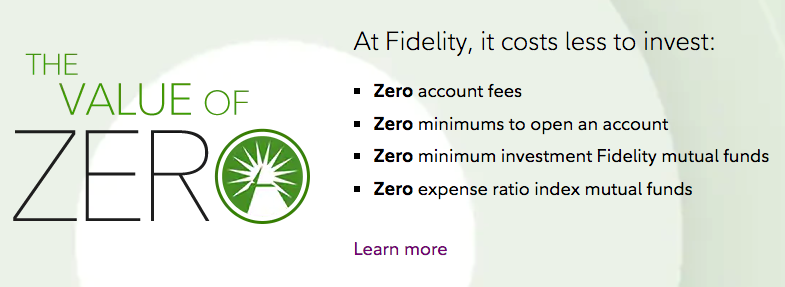[ad_1]
[Editor’s Note: The following originally appeared on FactSet.com. Elisabeth Kashner is director of ETF research and analytics for FactSet.]
Recently, Fidelity made a splash by launching two index mutual funds that charge no fees. In some ways, this is huge news, as the zero percent price tag confirms that the price war in asset management fees is truly a race to zero. [ETF Prime Podcast: Fidelity Goes To Zero]
Vanguard, Schwab, and BlackRock now have to decide whether to give up their remaining minuscule fees in the face of direct no-fee competition.
But are Fidelity’s zero-cost funds actually free to hold?
The True Cost Of Index Mutual Funds
The new Fidelity 0.00% funds will likely cost high-bracket investors between 0.05% and 0.10% for the U.S. fund (FZROX) and about 0.50% for the international fund (FZILX), based on the historical operating costs of parallel Fidelity funds FSTMX and FTIGX. The story might be slightly different in tax-deferred accounts. Without taxes on capital gains, FZROX may be nearly costless, but FZILX will likely still cost around 0.39% per year.
Fund fees are only part of the equation. FactSet ETF Analytics has designed a total annual cost-of-ownership metric that combines tracking difference and trading costs, and also allows for tax impact. As the table below illustrates, portfolio trading costs and capital gains taxes can often weigh heavily on after-tax mutual fund returns, in this case more heavily than trading spreads do on ETF returns. Vanguard mutual funds are a special case, as they share a portfolio with Vanguard ETFs, and can use some of the ETF advantages to reduce or remove impacts of rebalancing and flows on tracking difference and capital gains charges.

For a larger view, please click on the image above.
We will walk through the cost elements one by one, but before we do so, it’s useful to understand why these differences occur. It’s all about the creation and redemption of fund shares.
ETFs Are Actually Mutual Funds, But Different
The majority of ETFs are special types of mutual funds, having been granted exemptions from a handful of SEC 1940 Act rules. Mutual funds transact in cash, via the asset manager, while ETFs are created and redeemed in kind, by specialized agents who exchange a basket of portfolio securities for ETF shares, and, in turn, trade ETF shares with the public. Cash vs. in-kind creation/redemption drives differences in trading, tax treatment, flows impact, and handling of distributions.
Vanguard offers the best of both worlds, because its ETFs are actually share classes of its mutual funds. Vanguard portfolio managers use the ETF creation/redemption process to rebalance the entire portfolio, thus conferring Vanguard mutual funds with the tax and tracking efficiency of its ETFs.
Let’s look at each of these differences, one at a time. We can trace costs to each structure along the way.
Trading
For longer-term investors, the trading requirement of ETFs is a burden, rather than a draw. ETFs often trade at a spread around their net asset value (NAV), and sometimes at a premium or discount. Brokerage fees may be added on as well. No such issues with buying or selling shares in a mutual fund.
Even the largest, most liquid, cheapest, broad-based vanilla ETFs will set investors back a few basis points in spreads and sometimes in premia to NAVs.

Comps Source: User-Defined Comparables U.S. Dollar
For a larger view, please click on the image above.
Yet these trading costs can be worth bearing in exchange for the vehicles’ tax efficiency, especially for long holding periods, as they can be amortized.
[ad_2]
Source link Google News

